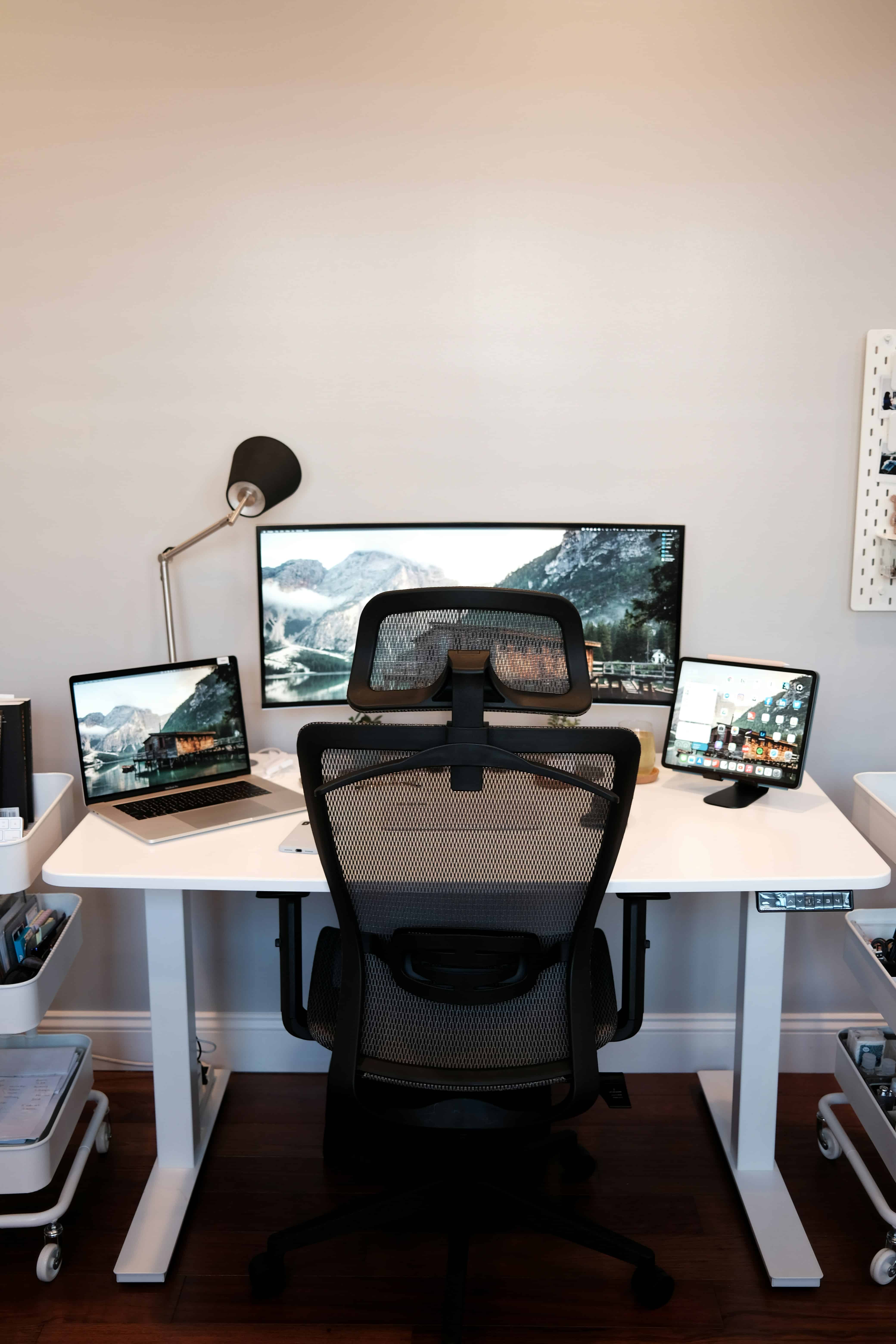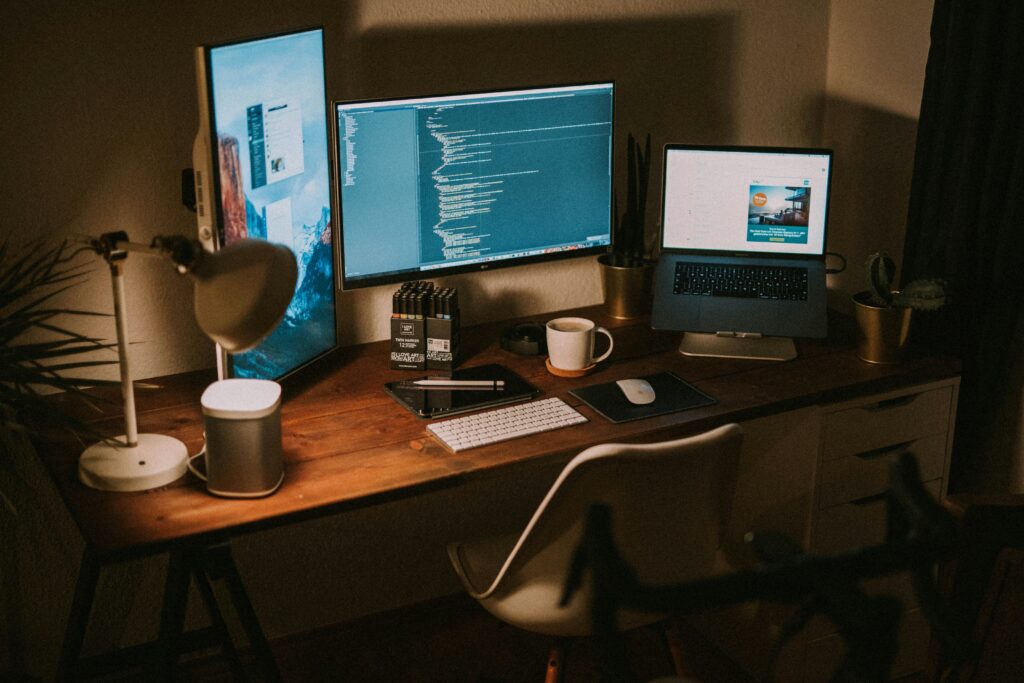Working from home is becoming increasingly popular, with over a quarter of Americans switching to remote work, and nearly every person in the country saying they’d like to work from home at least some of the time. But it takes a bit more than a laptop to make that switch comfortable. It’s important to pick the right tools to make your remote work experience both pleasant and productive.
The importance of picking the best work from home tools
You can get work done with just a laptop and Wi-Fi, but let’s face it: the office has more than just internet access. The space where you work has certain tools that help you focus and get the job done. Having healthy habits can go a long way.
Productivity
To match the productivity you had at headquarters while you’re in your work-from-home office, you’ll need certain items and software to help you limit your distractions. To do meaningful work, you need to be able to focus.
Comfort
The science of ergonomic design goes a long way in making your remote workspace more comfortable. Things like adjustable desks and functionally-built keyboards and mouses keep you healthy and happy in your job. You don’t need to work from a centralized location to be comfortable doing your job; you can move around within your space or stay in the same room as you see fit; it’s your house, your rules!
Health Benefits
Those tools that make you more comfortable also play a role in your health. A good chair keeps your back from aching; nice headphones keep your head from hurting; a bright desk lamp keeps your eyes from straining. You don’t want your work impacting your muscular health, your blood pressure, or your anxiety levels. Having a good workspace will make sure your time working from home is the best job you’ve ever had.
Plan Your Work Day
If you have everything accessible and organized, it’s easier to plan your work day.
How to choose the best tools to work from home
Working remotely is a great option for countless workers across the globe. The only downside is trying to recreate an office-like feel within your own home. Investing in certain tools can help you to create the perfect work from home setup.
Ideas:
Equipment for Home Office
- Determine what equipment you need to do your job. Every job requires its own tools; learn what you need to do yours. What kind of technology, furniture, or work equipment do you need? Is your WiFi speed at home enough to keep up with the demands of your office? Are your chairs adequate? Do you have the necessary stationary? Headphones? Do you need a good webcam to help with video calls and virtual meetings, like those offered by Logitech or Anker? What kind of computer, software, or art supplies might make your job easier? Do you have enough storage for essential documents, both physical and digital?

- Software. The software you need will vary depending on the job you’re in. Some are straightforward, like programs that store or share sensitive information and documents. Some help with cloud computing and storage or serve as a password manager. Some assist with focus. Project management tools can help with things like workflow automation, collaboration, project development, and more. Smartsheet offers project management software to help you stay organized and assist you with time tracking; Trello helps you book appointments; Nifty connects your team. It’s all about what works best for you.
- Computer monitor. Some people may do well with a laptop, while others might prefer a desktop with an extra external monitor. If you do go with a laptop, you should think about things like long battery life. Macbook Pros and Asus are known for their long battery life. A laptop’s battery life, performance speed, and image quality might not match up as well to a standard desktop, but your employee experience might be improved by having the mobility of a smaller, lighter device like a Macbook Air or Lenovo Think Pad. However, you may want the option to have a second screen accompanying your desktop, and some people find a full size keyboard with a number pad to be more comfortable.
- Visualize your ideal space. Remote work tools aren’t just about what you need to get going – it’s also about the aura. If you feel dark, crowded, cramped, or even overheated, you’re not going to be productive. If you have a small space available, it’s even more important to arrange yourself wisely. You should also set up artwork in your space that inspires you or brings you peace. Etsy is a good place to shop around, or you could try out Elephant Stock. You may also want to set up a few plants, which have been shown to improve mental health.
- Determine your lighting needs. Lighting impacts your workspace, be it overhead, lamps, even light from your laptop screen. Indirect light is best, and it should be kept bright and cool-toned to keep you focused. You may also want to consider task lighting like a space-saving clamp lamp from Uplift Desk or a small, flexible version from 2 Modern that will point bright light at small areas. If you want just a bit of extra ambiance, you could use something as simple as a night light to brighten your space.
- Temperature control. Overheating or freezing impacts your productivity, work quality, and happiness. Men tend to prefer the room colder than women. If you want to influence the temperature in your space without affecting the power bill of the whole house, think about investing in a desk fan or space heater.
Ergonomic Work Station
- Health and comfort needs. Your remote work tools should center largely around your well being. Studies have found remote employees’ productivity benefits from feeling well.
- To stand? Harvard Health has found getting a standing desk can do wonders for your neck and back. There’s some research that shows standing desks promote happiness too. All of those components can lead you to be more productive overall. You can choose an adjustable height desk, have a standing desk custom made for you, or create your own laptop stand by simply stacking boxes or books to lift your monitor up.
- To sit? If you choose to sit, you’ll need an extra-supportive chair. People in remote jobs should pick the one that meets their needs, adjusting for height, leaning angle, arm rest height and angle, lumbar support, and anything else they may desire to provide comfort. Think about how you tend to sit. If you’re a person who likes to sit cross legged, you may want different arm rests than someone who doesn’t. Keep in mind, though, your office chair can wind up being fairly expensive if you go for some of the higher-end models like those from ULine or Modern Office. If you’re looking for one that won’t break the bank, you may also want to invest in a seat cushion to relieve some pressure. You’ll need a good desk if you choose to sit, and investing in a desk that adjusts in height could still be a good idea.
- Or to kneel? Remote workers have found they may want an option in-between sitting and standing. New kneeling chairs like those sold by Vivo and Uplift Desk allow workers to feel back support while still sitting upright so you maintain good posture.
- Other ergonomic needs. If you’re a remote worker who has to look at a computer screen for a large portion of the day, you’re probably also typing quite a bit. Having an ergonomic workstation can make a big difference. Wrist rests like those made by Tecknet and Allsop prevent stress disorders. An ergonomic keyboard will keep your wrists and hands at a healthier angle, and a mechanical keyboard may be more tactile and easier for you to type on. A wireless mouse can also free up your wrist to sit in a position you find more comfortable.

- Other devices. Do you need a printer? HP has several popular small-sized ones perfect for working from home. If you want something even smaller, maybe check out a portable printer like the ones PIXMA offers. How about a scanner? The ScanSnap has wireless connectivity, so other members of your team can use it too. Do you have all the power cables you need? Do you have AA and AAA batteries to take with you in a pinch? Do you need anything else to help with you with group chats or video chats?
- Soundproofing – or not. Some people thrive in a completely quiet room, finding they get “in the zone” more easily without distracting noises. Other situations require a quiet space, like remote work where the employee is on conference calls on Google Meet or Zoom meetings for a large portion of the day. Soundproofing options can help. Explore various soundproofing options, such as soundproof panels and art, installable booths, noise canceling headphones from Bose or Sony, and more. If you prefer background noise and want to play music all day, consider investing in a good pair of wireless headphones so you don’t bother your neighbors.
- Work on your snack drawer. Some offices have communal snacks stocked for their employees; others simply encourage workers to bring their own food to keep at their desk. If you’re at home with unlimited access to everything in the pantry, you may be tempted to overeat. Having a specific basket or drawer of healthy snacks that you allot for your work day can help you keep your calorie intake in check. Try filling it up with things like nut mixes, granola bars, dried or fresh fruit, and veggie chips to keep yourself satiated and out of your cookie jar. You could also check out software that helps you track what you’re eating, like MyFitnessPal and Noom.

